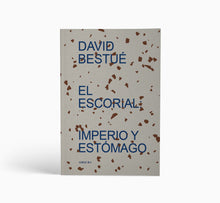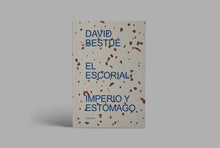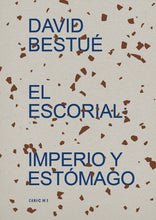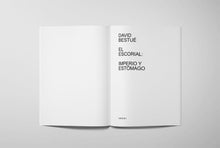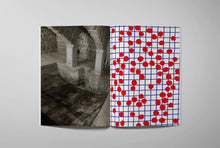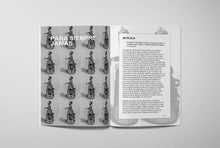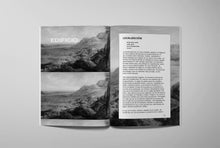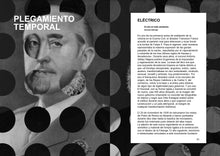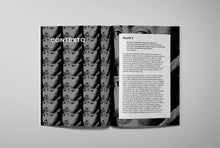
David Bestué
(2021)
210 x 297 mm
112 páginas + guardas
ISBN: 978-84-120368-8-6
Diseño: Setanta
Gastos de envío gratuitos en España
Premio FAD de pensamiento y crítica 2022
Durante su investigación sobre el monasterio de El Escorial, David Bestué comprobó, al explicar a otras personas aspectos que iba descubriendo, que pocas lo habían visitado y que quienes lo habían hecho tenían recuerdos confusos. O bien parece que no haya nada que decir, o bien se cae en la exaltación patriótica y en el relato de sus anécdotas y curiosidades. En ocasiones, es visto como una maldición, el residuo de algo que no termina de desaparecer; en otras, sin embargo, como una suerte de despensa de las esencias vivas de España.
Este texto pone en duda los valores invariables que sustentan el «macizo de la raza». Se habla del gobierno belicoso y autoritario de Felipe II, de la sustracción americana, de la deuda, de los periodos de gloria y abandono del edificio, de sus sucesivos incendios, saqueos y reconstrucciones. Como un cáliz que se llena o se vacía acorde a la situación de España y a la consideración cambiante hacia la religión, el ejército y la monarquía. Más que una piedra lírica, eterna, muda e imperturbable, el monasterio es la caja negra del país, un mecanismo que registra sus sacudidas, aunque estas intenten ser ocultadas; el símbolo de algo que se cree permanente, central, hegemónico; una estructura física e ideológica.
David Bestué (Barcelona, 1980) es un artista que trabaja la escultura y la escritura. Entre sus exposiciones individuales destacan Realismo, La España moderna y, en el Museo Reina Sofía, Rosi Amor, una investigación material y formal inspirada en los barrios madrileños de Las Tablas y Vallecas, así como en el monasterio de El Escorial, escenario recurrente de sus intereses en los últimos años. En Caniche ha publicado Historia de la fuerza (2017), un repaso visual por la evolución técnica, material y estructural en España, a partir de la historia moderna de su ingeniería.
Over the course of his research into the royal monastery of El Escorial, David Bestué came to realise, when discussing his findings with others, that not many people had actually been there. As for those who had, they were now left with somewhat hazy memories of it. It seems that people are either indifferent about the place, or else they celebrate it patriotically, revelling in all its anecdotes and curiosities. For some, this monastery complex is a curse, the vestige of something that just won’t go away; others, though, see it as a kind of hallowed storeroom, packed with the living essence of Spain.
This text calls into question the unchanging values which still feed into the idea of staunch and robust Spanish greatness. It talks about the war-hungry and authoritarian government of King Felipe II, about the plundering of America, about the building’s different periods of glory and decay, and about its many fires, lootings and reconstructions. The monastery is like a chalice, one which is either full or empty, depending on the situation in Spain and the shifting perceptions of religion, the army and the monarchy. More than just a poetic, eternal, silent and unshakeable rock, the monastery is Spain’s black box: it records all the country’s shocks and upheavals, regardless of attempts to cover them up. It is the symbol of something which is thought to be permanent, central, hegemonic; it is both a physical and an ideological structure.
David Bestué (Barcelona, 1980) is an artist who works in sculpture and writing. Of his individual exhibitions, highlights include Realismo, La España moderna and, at the Reina Sofía Museum, Rosi Amor, a material and formal investigation, inspired by the Madrid neighbourhoods of Las Tablas and Vallecas, as well as El Escorial, a setting which has been an ongoing source of interest for him over the past few years. With Caniche, he has published Historia de la fuerza (2017), a visual study of the technological, material and structural evolution in Spain, based on the modern history of its engineering.
La presente publicación ha obtenido una de las ayudas a la edición del Departamento de Cultura y Política Lingüística del Gobierno Vasco









